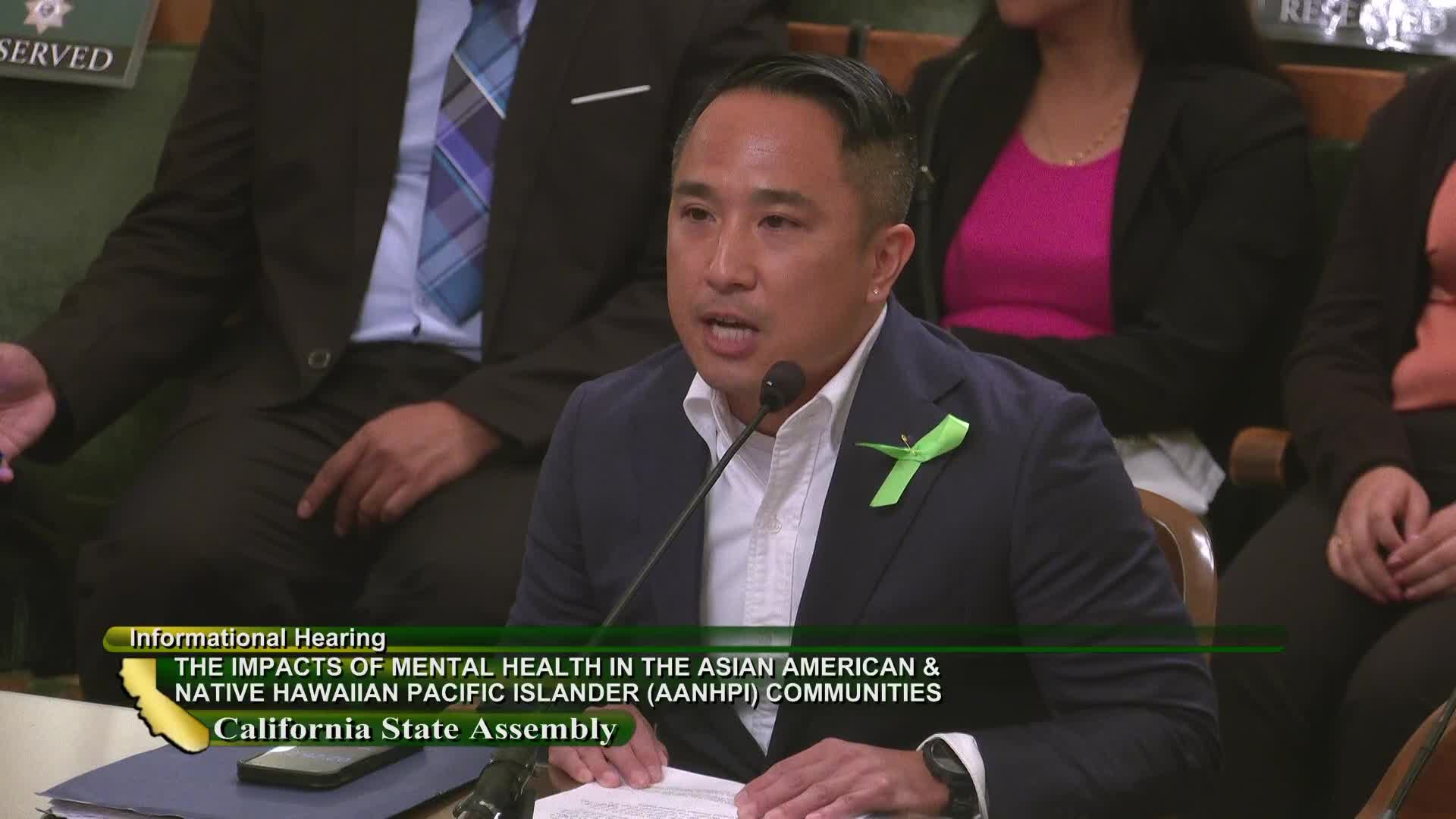Advocates demand urgent action to combat youth suicide crisis
June 05, 2024 | California State Assembly, House, Legislative, California

This article was created by AI summarizing key points discussed. AI makes mistakes, so for full details and context, please refer to the video of the full meeting. Please report any errors so we can fix them. Report an error »

In a recent government meeting, officials discussed alarming trends in youth mental health, particularly among Asian American, Native Hawaiian, and Pacific Islander (AANHPI) communities. The meeting highlighted the urgent need for enhanced suicide prevention measures, as suicide remains the leading cause of death for AANHPI youth aged 10 to 19 and the second leading cause for those aged 20 to 34. Despite the rising rates of youth suicidality, less than 20% of affected youth receive adequate mental health care.
The discussion underscored the disparities in mental health services, particularly in Los Angeles County, where AANHPI youth are disproportionately represented in mobile crisis response programs rather than outpatient services. This indicates that many do not receive timely care until their mental health crises escalate. Furthermore, AANHPI youth are the least likely among all racial and ethnic groups in the county to receive follow-up therapy after a crisis.
Advocacy groups, including the Los Angeles-based LTSC and nearly 60 other organizations, are calling for improved transparency and inclusiveness from government agencies regarding priority populations in mental health programs. They expressed concern that AANHPI youth have not been recognized as a priority in suicide prevention initiatives, as evidenced by discussions with the California Department of Public Health (CDPH). The CDPH's reliance on outdated data has led to a lack of dedicated resources for AANHPI communities.
The coalition emphasized the importance of centering youth voices in mental health outreach and expressed alarm over proposed budget cuts to the Children, Youth, and Behavioral Health Initiative. They also criticized Proposition 1, which reallocates significant funding from local counties to state-level programs, potentially undermining local advisory committees that understand community needs.
To address these issues, the coalition advocates for the appointment of AANHPI representatives to advisory committees and the incorporation of community-defined evidence practices in new regulations. They highlighted successful models of collaboration between public health departments and community-based organizations, urging continued funding for culturally responsive mental health initiatives like the California Reducing Disparities Project, which has shown positive outcomes in underserved communities.
The meeting concluded with a call for sustained investment in prevention and early intervention strategies, which have proven to be cost-effective, saving approximately $5 for every dollar spent during implementation. The coalition remains committed to advocating for the mental health needs of AANHPI youth and ensuring that their voices are heard in policy-making processes.
The discussion underscored the disparities in mental health services, particularly in Los Angeles County, where AANHPI youth are disproportionately represented in mobile crisis response programs rather than outpatient services. This indicates that many do not receive timely care until their mental health crises escalate. Furthermore, AANHPI youth are the least likely among all racial and ethnic groups in the county to receive follow-up therapy after a crisis.
Advocacy groups, including the Los Angeles-based LTSC and nearly 60 other organizations, are calling for improved transparency and inclusiveness from government agencies regarding priority populations in mental health programs. They expressed concern that AANHPI youth have not been recognized as a priority in suicide prevention initiatives, as evidenced by discussions with the California Department of Public Health (CDPH). The CDPH's reliance on outdated data has led to a lack of dedicated resources for AANHPI communities.
The coalition emphasized the importance of centering youth voices in mental health outreach and expressed alarm over proposed budget cuts to the Children, Youth, and Behavioral Health Initiative. They also criticized Proposition 1, which reallocates significant funding from local counties to state-level programs, potentially undermining local advisory committees that understand community needs.
To address these issues, the coalition advocates for the appointment of AANHPI representatives to advisory committees and the incorporation of community-defined evidence practices in new regulations. They highlighted successful models of collaboration between public health departments and community-based organizations, urging continued funding for culturally responsive mental health initiatives like the California Reducing Disparities Project, which has shown positive outcomes in underserved communities.
The meeting concluded with a call for sustained investment in prevention and early intervention strategies, which have proven to be cost-effective, saving approximately $5 for every dollar spent during implementation. The coalition remains committed to advocating for the mental health needs of AANHPI youth and ensuring that their voices are heard in policy-making processes.
View full meeting
This article is based on a recent meeting—watch the full video and explore the complete transcript for deeper insights into the discussion.
View full meeting
